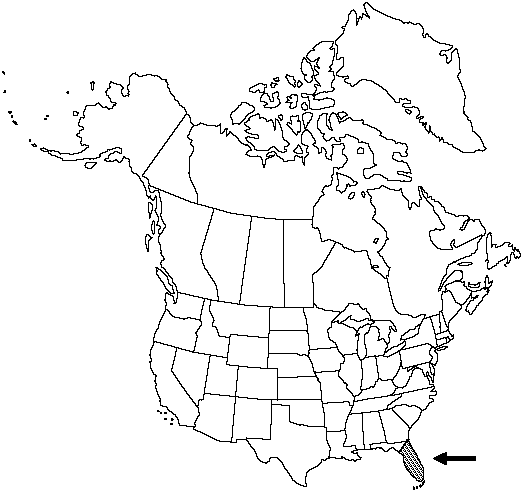Difference between revisions of "Blechnum serrulatum"
Actes Soc. Hist. Nat. Paris 1: 114. 1792.
FNA>Volume Importer |
FNA>Volume Importer |
||
| Line 32: | Line 32: | ||
-->{{#Taxon: | -->{{#Taxon: | ||
name=Blechnum serrulatum | name=Blechnum serrulatum | ||
| − | |||
|authority=Richard | |authority=Richard | ||
|rank=species | |rank=species | ||
| Line 46: | Line 45: | ||
|publication year=1792 | |publication year=1792 | ||
|special status= | |special status= | ||
| − | |source xml=https://jpend@bitbucket.org/aafc-mbb/fna-data-curation.git/src/ | + | |source xml=https://jpend@bitbucket.org/aafc-mbb/fna-data-curation.git/src/eaa6e58056e40c9ef614d8f47aea294977a1a5e9/coarse_grained_fna_xml/V2/V2_372.xml |
|genus=Blechnum | |genus=Blechnum | ||
|species=Blechnum serrulatum | |species=Blechnum serrulatum | ||
Revision as of 19:47, 16 December 2019
Stems stout, horizontal and long-creeping, branched, partly erect at tip, rarely climbing tree trunks. Leaves ± monomorphic, widely spaced, erect to arching. Petiole dull yellow or grayish brown or light brown, 10-55 cm, finely scaly proximally. Blade broadly linear to elliptic-lanceolate, 1-pinnate throughout, with conform terminal pinnae, 25-70 × 5-28 cm, base truncate, glabrous. Rachis lacking indument abaxially. Pinnae articulate to rachis except for terminal pinna, subsessile to short-stalked; larger pinnae ± straight, linear to linear-elliptic or linear-lanceolate, 3-15 × 0.5-1.8 cm, fertile pinnae often slightly smaller and contracted; margins serrulate; costae with indument of scales abaxially. 2n = 72.
Habitat: Swamps, marshes, wet prairies, and adjacent moist pine woods or hammocks
Elevation: 0 m
Distribution

Fla., Central America, South America.
Discussion
Plants of Blechnum serrulatum occurring in open sun are often dwarfed and stiffly erect. Those occurring in brackish conditions or perennially flooded areas may become hemiepiphytes.
Selected References
None.